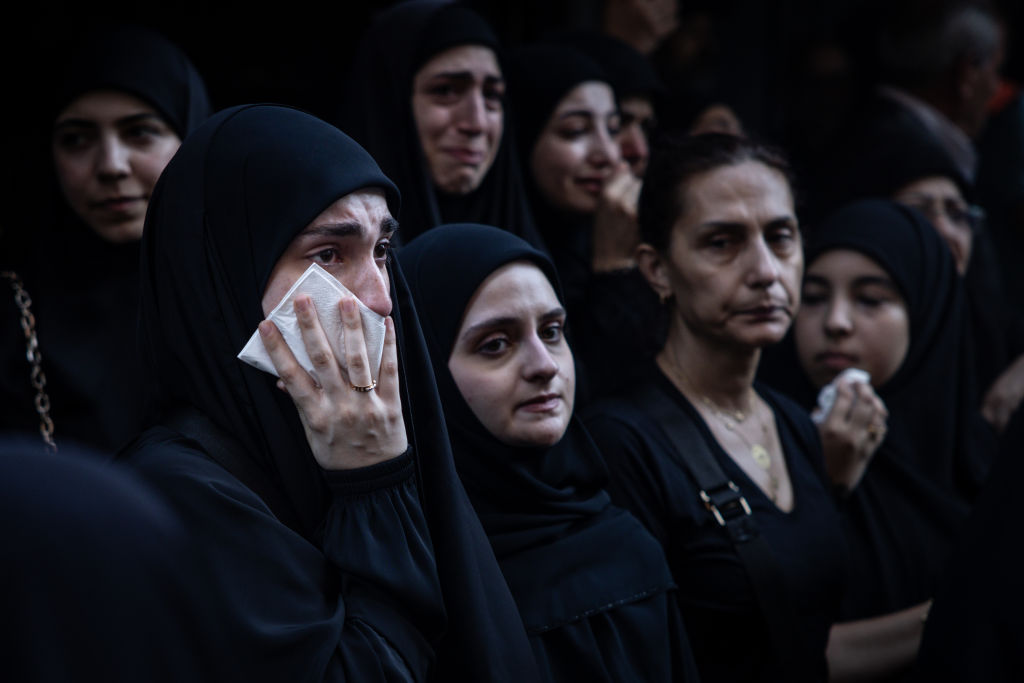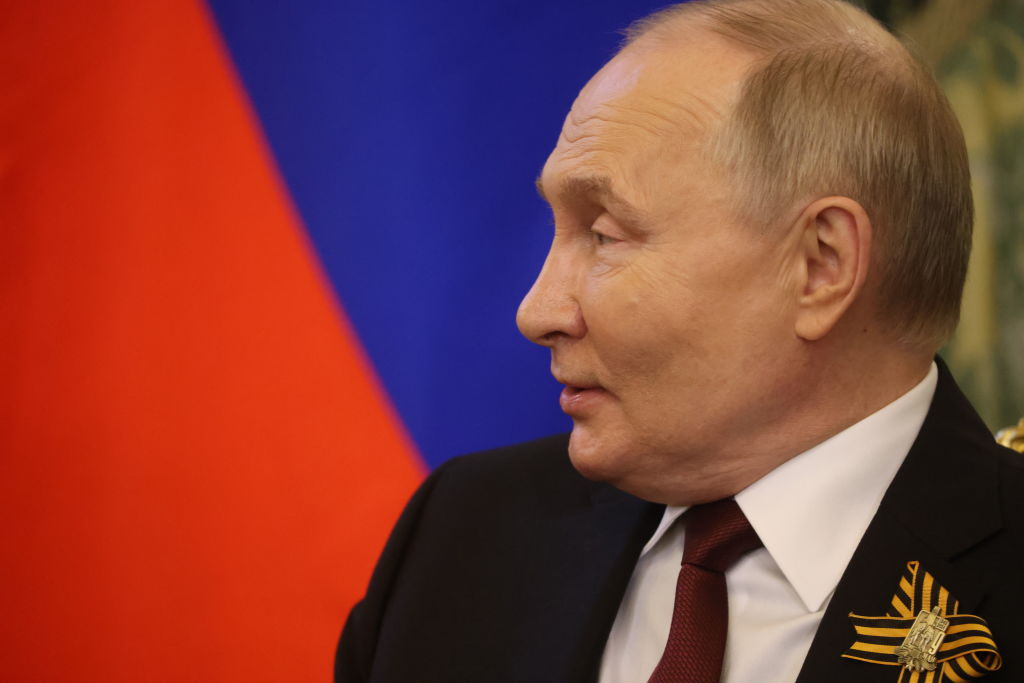Over the past three weeks Israel has delivered an exceptional masterclass in intelligence-led military operations. Through the use of exploding pagers and radios, precise airstrikes, and a special bombing run against Hassan Nasrallah’s multi-storey bunker, all timed to perfection, the Israelis decapitated almost the entire command structure of Hezbollah – the region’s largest and most potent terrorist organisation.
Success on this scale, claiming so many top-level targets – including Nasrallah himself, the monster terrorist-in-chief – in such a short space of time, is absolutely astounding and unprecedented.
It follows the Gaza campaign – unleashed in response to Hamas’s barbaric 7 October terrorist attacks – whose main operations have largely concluded. This, too, has been a military success in the sense of Israel achieving its immediate objective of crippling Hamas, destroying its tunnels and retaking effective control of Gaza.
More importantly, and similarly to the recent feats of arms in the north, this operation – codenamed Swords of Iron – provided impressive evidence of the IDF’s sterling training and military effectiveness in the most challenging of circumstances. An urban warfare campaign that prior to its commencement on 27 October 2023 was expected to turn into an attritional, protracted and bloody guerrilla hellscape for the IDF, has only claimed the lives of 346 brave Israeli soldiers so far – each one a tragedy, but, still, far less than some early estimates of up to 5,000 potential IDF deaths.
In addition to all this, Israel, with allied help, has also executed almost to perfection not one but two large scale air and missile defence operations against mass missile attacks launched by Iran, back in April and this Tuesday night. The one in April involved a larger and more complex strike package comprising both drones, cruise missiles and ballistic missiles, but it was telegraphed well in advance and executed by Iran almost in a performative manner.
By contrast, the one this week, with some 180 ballistic missiles, was short-notice and looked much worse. Many targets were intercepted – including, it appears, outside the atmosphere – by the Israeli Arrow ballistic missile defence system, but several warheads did reach their intended target areas, though causing only minimal damage. They were likely allowed by the IDF to pass through precisely because they did not represent a major threat.
When considered in the round, from the Gaza campaign to the special operations against Hezbollah and the almost flawless defence – on two occasions – against Iran’s high-tech, large-scale missile strikes, the performance of the IDF would suggest that Israel has turned the tide after being surprised on 7 October and now has the military upper hand in this complex war of survival against Tehran and its proxies. There is now a sense that Israel has demonstrated, once again, that it cannot be defeated, that any attempts to destroy it will come to nothing – and that those who try will eventually perish.
The reality of the situation might be a bit harsher. Israel’s strategic dilemmas and precarious position endure despite these successes, for several reasons.
In the first place, we need to appreciate the full dimensions of Tel Aviv’s problem. In Benjamin Netanyahu’s words, Israel is fighting a “seven-front war”. To the south, in Gaza, there is Hamas and, further afield in the Yemen, the Houthis. To the north, in Lebanon and seeping across into Syria, there is Hezbollah. Syria itself, which also borders Israel along the Golan Heights, is the fourth front and effectively a dependency of Iran.
President Assad owes his survival to the Iranian Revolutionary Guard Corps (IRGC), which funds, equips and runs a whole network of Iranian-aligned jihadi militias in Syria, alleged to number anywhere between 60,000 and 100,000 fighters. This force is a constant threat against Israel and there are regular clashes and cross-border raids in that region.
The last three “fronts” facing Israel are the West Bank (an incredibly challenging area to secure against terrorist infiltration), the Iran-backed Popular Mobilisation Forces (PMF) that control Iraq, and Iran itself.
Israel’s successes have been great, but they need to be seen in the context of the vast Iranian “ring of fire” that surrounds it and whose combined resources are still enormous.
Secondly, Hezbollah is down but not out. It has already begun appointing new leaders and commanders; organisational effectiveness will suffer for a while but no one is irreplaceable. Its fighting force – of anywhere up to 50,000 terrorists – has not yet been engaged on a large scale and remains available. It also benefits from a powerful IRGC-run support infrastructure and extra manpower next door in Syria.
Hezbollah’s forward-deployed positions and military infrastructures, including some missile dumps, have been ravaged by the Israeli Air Force and by the most recent Israeli incursions into southern Lebanon. But most of its long-range, high-end precision guided munitions (PGM) arsenal – estimated to number at least 30,000 missiles – is held further into Lebanon and probably remains largely usable. The threat of vast missile salvos that can overwhelm the Iron Dome has always been the gravest threat to Israel from the north, and recent events have not technically changed that.
In these circumstances, and unlike in Gaza, the Lebanon situation will be much more difficult to bring to a satisfactory military conclusion for Israel. It’s clear that the Israeli Government had not made a decision to launch an offensive across the Lebanese border before the pagers operation and the assassination streak – otherwise this would have followed immediately, to take advantage of the disarray in Hezbollah’s ranks. If this is a sign of a lack of a broader plan, it does not bode particularly well at the strategic level in the longer run. The weather also worsens towards the end of October, which could significantly affect IDF operations.
Thirdly, Israel does not have decisive attack options against Iran’s nuclear programme without direct support from the US Air Force. Destroying these super-hardened nuclear research facilities, built into mountains, requires the use of 30,000-pound Massive Ordnance Penetrator (MOP) GBU—57/B bombs – the most powerful in the world and designed exactly for this type of mission – which only the US has, and which can only be delivered by US bombers like the B-2.
Israel could undertake a smaller operation on its own – although the requirements of air refuelling as well as dealing with Iranian air defences at distances of thousands of miles involve great risk. But even if successful, such an operation would likely only damage Iran’s nuclear programme, at the price of igniting the long-feared full-scale regional war – instead of the serious but still ultimately limited exchanges and operations we have seen so far over the past year. With Israel, we cannot discount the possibility that the limitations of an air raid could be compensated by some additional unconventional special operations the IDF and Mossad might have prepared inside Iran in advance. But overall, the balance of risk weighs against an Israel-only strike against Iran’s nuclear facilities.
American political support for anything of this nature – let alone the possibility of direct US participation, i.e. going to war with Iran – is unlikely to materialise, certainly not before the November elections. The current Administration will not countenance this level of escalation – president Biden has already made this clear – even if the target is, for example, Iran’s oil industry rather than the nuclear programme. To do otherwise would damage the Democrats electorally and would also cut across their ideological stance on this issue, inherited from the Obama years. And if Trump wins, his Administration could only act after Inauguration in January next year.
A nuclear Iran would be a (potentially lethal) nightmare firstly for Israel but also for the region and, in the longer run, for the world. It would completely reset the balance of power in the Middle East. Navigating to that destination without triggering a joint Israeli-US strike on its nuclear facilities is, ultimately, Tehran’s principal strategic goal. But Israel does not appear to be any closer to thwarting it now than it was three weeks ago.
Fourthly, US power in the region is declining, which only weakens Israel’s position in the long run. At a macro level this is a long-term trend tied to the wider geostrategic reordering of the global balance of power, which is forcing the US to focus more of its resources on countering China in the Western Pacific and seek to draw down – to some extent – in Europe and the Middle East. It is also part of a historical cycle of heavy and costly US engagement in the region that is now coming to a close just as America’s energy revolution has removed the direct need for Gulf oil.
At a closer look, the situation is even more acute. The prestige and influence of the US in the region has been greatly reduced over the past decade in particular. The list of failures includes Assad’s victory in the Syrian civil war, the de facto loss of Iraq to Iranian control, and China’s strong political and economic inroads into the region.
On the military side of this story, a key development took place on the same day as the strike that killed Hassan Nasrallah, and has gone somewhat less noticed as a result. The US announced plans to draw down military forces from Iraq (and also Syria) over the next year, and likely continuing in 2026. Formally, this is presented as the end of Operation Inherent Resolve, the anti-ISIS counter-terrorism campaign active since 2014. In reality, the US military footprint (about 2,500 troops) located at a series of bases and facilities across Iraq and Syria has been serving a wider purpose of providing a counterbalance against Iran’s network of jihadi militias spread across its land bridge to Lebanon.
Losing this American outpost in the middle of the Shia Crescent will see US military posture in the region returning to a limited state not seen since before the 2003 invasion of Iraq, at least from a basing perspective. This is not good news for Israel over the longer term.
Finally, the fifth key problem is that the clock is ticking for the Israeli economy. The sheer scale of the military challenge is keeping the army – which relies heavily on hundreds of thousands of reservists – mobilised at high rate, and for a long time. In addition, there are large numbers of people displaced within the country – around 70,000 just from the north, as a result of Hezbollah rocket attacks.
The economy is not structured for this kind of contingency. It leads to labour shortages in industry, which transfer into slower economic activity and even increasing numbers of bankruptcies. In addition, the cost of the war itself – running large scale operations and consuming expensive munitions – is adding up. Then there are the knock-on effects on the investment climate or sectors like tourism.
As a result, the Israeli economy is contracting rapidly. Growth is still positive this year at over 2 per cent but has dipped more than four percentage points compared to the pre-7 October trend. Following the recent opening of the Lebanon front in the north, credit rating agencies have downgraded the Israeli economy again, by two notches – bringing it only three away from “junk” status.
These numbers are not yet a critical problem; Israel still has plenty of economic room to allow it to conduct the war as it sees fit from a military point of view. And when it comes to wars of survival, the contemporaneous example of Ukraine shows how much economic destruction can be endured when the stakes are existential.
Nonetheless, particularly in an advanced democracy like Israel, the economic factor will come into play increasingly more at the political level, and ultimately acts as a constraint on Israel’s policy options in the long run.
To conclude, Israel is winning battles but not yet the war. All its successes against Iran’s dark empire should rightly be celebrated, but the bigger picture must also be borne in mind. Overlaying all the five main issues listed above is the fact that Israel, for all its brilliance in executing exquisite operations and winning tactical victories against superior forces, does not yet seem to have a clear strategy for how to break Iranian power and remove the threat to itself.
Iran has built its “ring of fire” around Israel over decades, and its strategy against Tel Aviv is one of attrition. Israel will need all the help it can get to overcome this evil, for the sake of the entire civilised world.
Gabriel Elefteriu is deputy director at the Council on Geostrategy in London and a fellow at Yorktown Institute in Washington, D.C.






Three old military ‘truths’ shaken by the Ukraine war